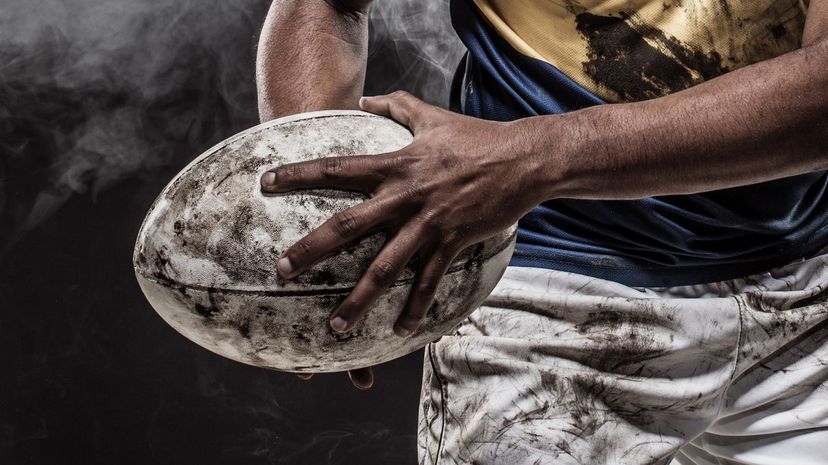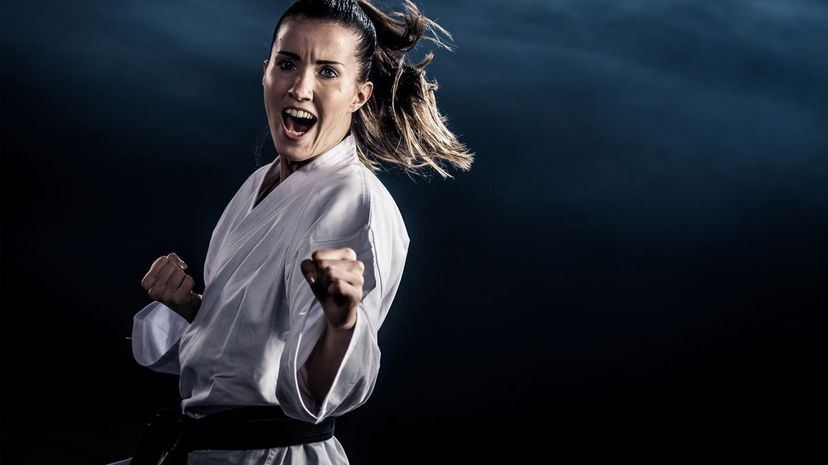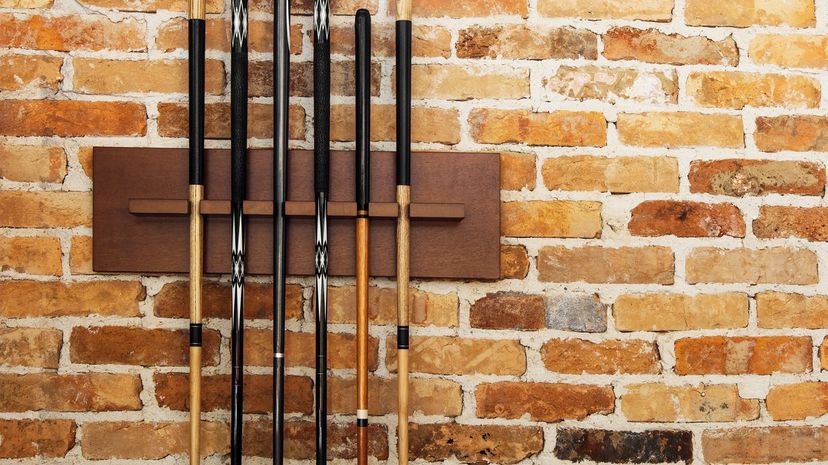
About This Quiz
Soccer is the most popular sport in the world because of the equipment needed to play. Very little is needed. Kids across the world have played soccer with as little as a water bottle and a trash can, and almost everybody can play. Running and walking require literally no equipment, but soccer comes next as a low maintenance sport.
The most popular sport in America, on the other hand, American football, requires very specific and very specialized equipment in order to play. Running around and playing tackle football with your friends on concrete without any pads isn't a smart idea. You need pads and a helmet and a field at the very least to play tackle football. Hockey requires an equal amount of specialized equipment.Â
If you want to skip the mainstream sports and participate in extreme sports, just remember they're extreme because they're dangerous, but also because they're extremely expensive. Snowboarding and skiing equipment can easily run you several hundred dollars. If you're into skydiving or base jumping or wingsuiting, expect to spend thousands of dollars on equipment. And if your dream is to drive really fast around a racetrack, you can expect to spend hundreds of thousands of dollars to get there.
From soccer to car racing, there are thousands of pieces of equipment in the sports world. Can you match the equipment to the sport?

American football helmets have greatly evolved since the earliest days of football when players wore leather head covers. Today's helmets are built with hard plastics and metal and are designed to withstand collision after collision.

Baseball helmets differ from most other sport helmets in that they don't feature chin straps. Baseball helmets aren't as strong as football helmets, but they have come a long way since baseball's earliest days.

Hockey helmets are worn by ice hockey players and they may or may not have a visor or mask. All goalies wear helmets equipped with face masks. The NHL made helmets mandatory in the '70s, but players who were grandfathered into the old rules could play helmetless until they retired.
Advertisement

The first basketballs were as round as a soccer ball but had stitching like a football. The earliest basketball games were actually played with soccer balls. James Naismith invented the game in 1891 in Springfield, Mass.

The earliest tennis rackets were invented at the end of the 1800s. They were made of solid wood and featured small striking surfaces. The strings have been made from animal intestines for decades, but some strings are combinations of synthetic materials like nylon and Kevlar.

Squash rackets closely resemble tennis rackets and they're made of the same materials. Squash rackets are usually longer and thinner than tennis rackets. A squash racket's head size is about 75 square inches, while a tennis racket's head is about 100 square inches.
Advertisement

A rugby ball is a squashed and elongated sphere that might be mistaken for an American football. Its tips are more rounded than a football and it doesn't feature any laces. It's usually thrown underhand with two hands.

Water polo evolved from rugby and originated in 1800s England. The water polo ball might look like a volleyball, but it's about half the size. Polo balls are usually bright in color and designed to offer maximum grip.

Volleyballs are spheres and vary in size depending on league of play. They usually feature 18 panels and a multi-colored pattern, but solid white volleyballs are also common. Volleyball was inspired by basketball and was invented just a few years later.
Advertisement

Cricket bats are some of the most unique in the sports world. They're only made from wood and date back to the 17th century. The largest ones allowed in professional play are 38 inches long and four and quarter inches wide.

The lacrosse stick is used for catching, throwing and carrying a lacrosse ball during gameplay. The first ones were made of wood, but today's are made of plastics and metals. The pockets are usually made of nylon mesh.

A wakeboard almost resembles a snowboard in that it's equipped with bindings and requires special footwear to ride. Surfers don't wear shoes or boots when surfing and surfboards don't have bindings like these boards.
Advertisement

There are many different boots to wear in the snow, but snowboard boots are the perfect combination of stiffness and flexibility to allow riders to safely maneuver down the mountain. Ski boots are a lot more rigid and are made from plastic and metal.

There are several types of ski boots, and the earliest pairs were actually made from leather. Ski boots usually have four or five straps in place of shoelaces. Today's ski boots are made from metal and hard plastic and aren't too flexible.

The standard 32-panel soccer ball was created in 1962, but 24-panel and 42-panel soccer balls have been created since. The ball is shaped in a truncated icosahedron, which is a ball covered in hexagonal and pentagonal faces.
Advertisement

There are so many helmets in the sports it's easy to get them all mixed up. Cycling helmets are lightweight and aerodynamic but extremely strong. Unlike a football helmet, these helmets are frequently useless after one hit. They're built with protection and peripheral vision in mind.

Believe it or not, these full-face helmets weren't mandatory in NASCAR until after Dale Earnhardt died in the final lap of the 2001 Daytona 500. Racers customize their helmets as they see fit. They're made of hard foam and carbon fiber.

Golf tees are only used at the tee box on a golf course. They're used to prop golf balls into the air for a tee shot. The height of your tee will depend on the club you're teeing off with. A driver might require a high tee while a 9-iron requires a short tee.
Advertisement

Badminton rackets are extremely light and usually made from carbon fiber. They're much smaller than squash and tennis rackets. The rules change by league, but badminton rackets are no larger than 26 inches long and 9 inches wide.

The karategi is similar to other traditional outfits worn across martial arts disciplines, but each outfit differs slightly. Muay Thai fighters wear boxing gloves and trunks while Aikido fighters wear custom kimonos.

There are two main differences between figure skates and clap skates. Clap skates feature a longer blade and the blade is attached to the boot by a hinge. This means the blade remains in contact with the ice as the skater lifts their heel.
Advertisement

The surfoboard is one of the most difficult boards to ride since it doesn't have bindings like a snowboard and is much larger than a skateboard. They were invented in Hawaii and originally made from wood.

Skateboards were invented in California when somebody decided to strap roller skates to a piece of wood. The boards evolved to include grip tape, contours and lips and took off at the end of the 20th century.

Fishing rods and reels are usually sold separately. You can't go deep-sea fishing with a fly-fishing rod and you don't need an ice-fishing reel to catch sunfish at the local pond. Matching the correct rod and reel to your adventure is essential for success.
Advertisement

Racing shells evolved from rowboats. The shells are longer and narrower than a rowboat, which allows for maximum speed and efficiency when rowing. Rowing a boat is called "sculling" and a single scull is a one-person racing shell.

Competitive swimmers need goggles to swim underwater, but divers don't wear goggles. Divers need to see everything as clearly as possible as they somersault into the water face-first. Once they hit the water, they no longer need to see, so the goggles are useless. Snorkelers need larger goggles.

Archery involves many pieces of equipment, and the bow and arrow are probably the two most popular pieces. A quiver is like a golf bag but for arrows instead of golf clubs. After the bow, arrow and string, it's one of the most important pieces of equipment.
Advertisement

A fencing helmet is technically a mask, but it protects the head as well as the face. There are different masks for different types of fencing, which have different scoring systems. The mask is also equipped with a protective bib to cover the neck.

A balance beam is about four feet tall, 16 feet long and a whopping 10 centimeters wide. To put that into perspective, an iPhone 11 is 7.5 centimeters wide. International balance beam competitions require gymnast to perform a series of maneuvers.

The discus is used in the track and field event known as the discus throw. It's one of the 10 events that make up the modern decathlon and it's believed to have originated in 700 BC. The longest recorded discus throw was 243 ft. and 1/2 an inch in 1986.
Advertisement

The longest recorded javelin throw came at the 1996 Summer Olympics when the Czech Republic''s Jan Zelezny threw it 323 feet and one inch. A javelin is a spear that was invented for war purposes but today is used for sport. The javelin throw is a decathlon event.

Curling stems from the same family of games as bocce, bowls and shuffleboard. The curling stones are made from granite and then polished until smooth. They're required to weigh between 38 and 44 pounds.

The shot is a metal ball that varies in weight. The men's event in the Olympics uses a 16-pound shot and the women's event uses an 8.8-pound shot. The goal of shot put is to put (not throw) the shot as far away from the starting point as possible.
Advertisement

The most popular hurdling races are the 100, 110 and 400-meter races and each race features 10 hurdles. The tallest hurdles are 42 inches high and the lowest are 27 inches. The first hurdle in most races is about 45 feet from the starting point.

Bike pegs have been around for a couple hundred years but didn't really take off until the end of the millennium. They're attached to the front or rear axle of a bike and are used to do tricks and stunts on BMX and freestyle bikes. They're not commonly seen on mountain bikes.

Pool isn't the only cuesport that uses a cue stick, but it's likely the most popular. The cue stick is made from wood but can also be made from carbon fiber or fiberglass. This simple stick is comprised of several parts.
Advertisement

Bowling pins come in a few shapes and sizes, but the typical pins are called ten-pin bowling pins. They measure 4.75 inches at their widest and reach a height of 15 inches. Each pin weighs a bit more than three pounds. The bowling ball weighs 16 pounds.

This table tennis paddle is also known as a bat sometimes. They're usually made of solid plastic or wood covered with rubber. The rubber covering is key. It can be dimpled or smooth and can be customized in a number of ways.

Field hockey and lacrosse balls might look alike, but they're different. Both balls are spheres, but lacrosse balls are about an inch smaller in circumference and slightly lighter. Lacrosse balls are also smooth and bouncy while field hockey balls are hard and sometimes dimpled.
Advertisement

Professional boxing gloves are made with an outer layer of leather while cheaper gloves use vinyl. The use of boxing gloves or support wraps dates all the way back to Ancient Egypt. Gloves are used to protect both the boxer's hands and the opponent's head.